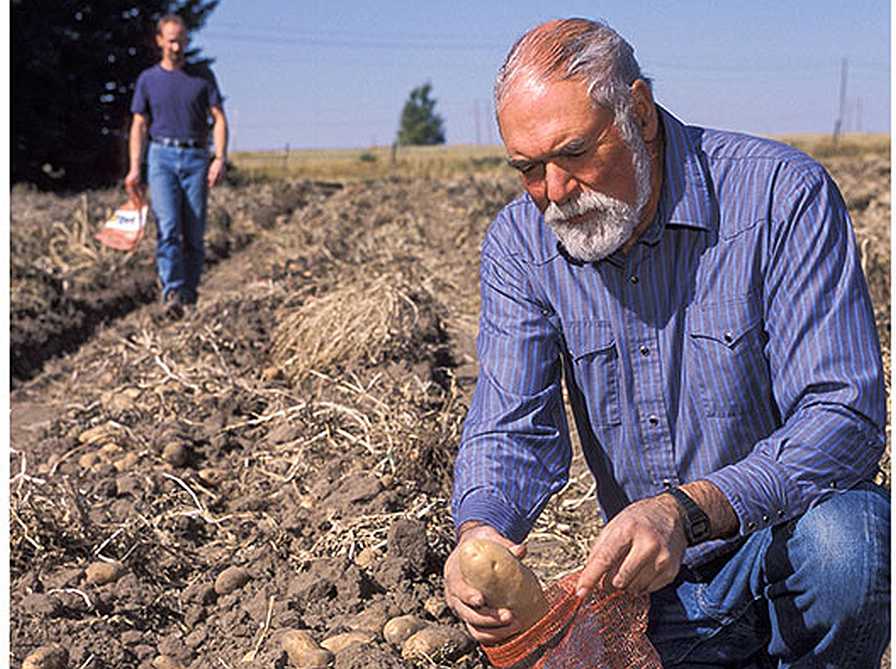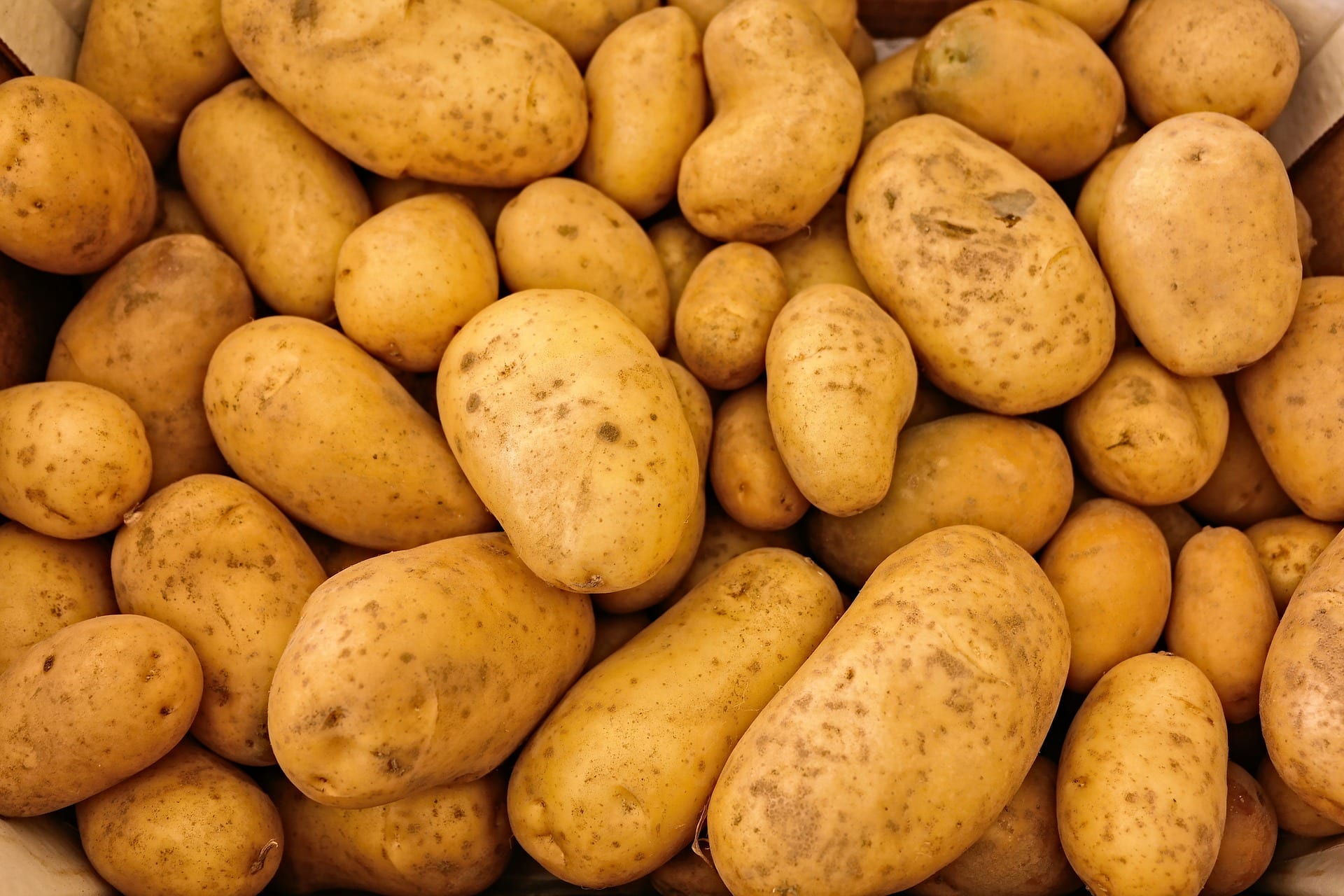Although it wasn’t an immediate success, the ‘Russet Burbank’ cultivar now accounts for about 40% of the U.S. potato acreage. It originates from a seed collected from an ‘Early Rose’ potato plant that Luther Burbank planted in 1872. Many decades later, a natural genetic mutant (a chimera) of the original Burbank with russet skin became the Russet Burbank we know today.
‘Russet Burbank’ is a dual-purpose potato — suitable for both fresh and processing markets — and widely accepted by consumers. You can store it for many months before use, which allows for year-round distribution and processing. This may be the strongest attribute of ‘Russet Burbank’ and is one that few other russet-type cultivars have been able to match.
It Has Some Bad Qualities, But We Know What to Expect
‘Russet Burbank’ is prone to tuber defects when grown under stressful conditions. This includes internal defects like brown spot and hollow heart, and external defects like knobs and pointed ends. It is also susceptible to several potato diseases, such as Verticillium wilt and tuber rot diseases.
Growers and processors understand these weaknesses and have strategies to manage many of them. New potato cultivars do not come with a management handbook. We learn a lot about new cultivars in their development phase, but unforeseen challenges often arise when they are planted commercially on larger acreages and in new environments. In order to succeed, a new cultivar needs to have some exceptional attributes so that growers are willing to accept the risk of facing some unknowns.

It’s a Lot of Work to Develop a New Potato Cultivar
Cultivated potatoes are tetraploids with four sets of each chromosome and have a diversity of unique genes. This makes for seemingly endless possibilities in the traits that can be expressed in the progeny of a cross between two potatoes. The challenge is passing on the good characteristics of each parent and losing the bad. It takes numerous crosses to land on a good one.
Typical conventional potato breeding programs evaluate the tubers from about 100,000 crosses every year. And breeders select only about 10% to carry forward. Although a potato breeder can evaluate about 3.5 million potato seedlings over the course of his or her career, they’ll see only a few make it through and have a chance at commercial success. If you plant true potato seeds from a berry collected from a potato plant, the resulting plants and tubers will all be different — they will each represent a unique variety.
The only way to fix traits is to produce potato cultivars asexually from clonal stock. Clonal propagation significantly increases the time it takes to develop new potato cultivars. A single hill of potatoes produces fewer than 15 tubers per plant. So the first years of development are spent multiplying enough tubers to allow for evaluation in replicated research trials. Before potato selections are released, they are tested in multiple growing environments. It typically takes 13 to 14 years to develop, evaluate, and release a new potato cultivar from a conventional potato-breeding program.
What About Genetic Engineering (GE)?
GE is the direct manipulation of an organism’s genome using biotechnology. The process usually involves the insertion or removal of specific genes. This technology can be used to strengthen potato germplasm by introducing genes from wild potato relatives into cultivated potato. Especially when they will not cross using traditional breeding methods.
Breeders can also use the technology to alter some negative attributes of popular potato cultivars, especially for traits that are conveyed by just one or a few genes. The U.S. government has approved the release of several genetically modified (GM) potato cultivars that have been deemed safe for consumption and for the environment. They are not accepted in all countries.
GM foods present an ethical issue for some people, and others reject them out of concerns for the environment or because they have fears about food safety. Most potato growers and distributors in the U.S. are not prepared to face these marketing or export challenges and have decided not to grow or sell GM potatoes for now.

“Plant potato seeds, and you tap a mine of heredity, infinite in its uncertainty, but infinite, too, in its possibility.”
